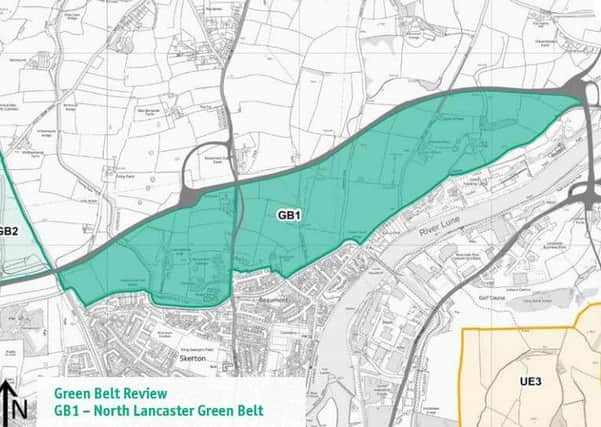Revealed: Thousands of new homes planned for Lancaster and Carnforth


The draft blueprint which aims to shape the future of the Lancaster and Morecambe area over the next 20 years will be discussed by councillors next week.
The proposals are part of Lancaster City Council’s Local Plan and include up to 3,500 new homes between Lancaster and the university including new schools, and the potential for a “garden village” at Bailrigg.
Advertisement
Hide AdAdvertisement
Hide AdA new development of 1,000 new homes at Cuckoo Farm between Ridge Lea and Lancaster Farms Prison is also being taken forward, as well as 500 properties on greenbelt land at Lundsfield Quarry, south of Carnforth, and 1,000 north of Beaumont and Skerton, between the Bay Gateway and Halton Road.
Smaller developments, including 195 houses east of Williamson Park, will make up the rest of the 13,000 new properties the council says it needs so that people can “find work and have a decent home”.
Following a public consultation last autumn, planners have decided not to move forward with proposals for new developments between Bolton-le-Sands and Slyne-with-Hest, which villagers dubbed “Bolton-le-Slyne”.
Plans to build on greenbelt land east of Torrisholme Barrow, and on land east of the M6, south east of Halton, have also been shelved, as has a major
housing development in Dolphinholme.
Advertisement
Hide AdAdvertisement
Hide AdThere is no set timescale as yet for the development of these sites.
Coun Janice Hanson, cabinet member with responsibility for planning and regeneration, said: “The process of putting together a local plan is lengthy and complex and has to take into account a wide range of factors.
“The feedback we received during last year’s consultation has been instrumental in helping the council to put together the draft plan and, subject to approval by full council, there will now be another chance for people to get involved.
“It’s important that we make progress so we can develop a final Local Plan to provide the opportunities for people to find work and have a decent home.”
Advertisement
Hide AdAdvertisement
Hide AdMaurice Brophy, Lancaster City Council’s planning and housing policy manager, told the Lancaster Guardian that up to 9,500 jobs could be created over the next 20 years.
This includes growth in sectors including education, health, energy, Heysham Port, and “developing the culture and retail offering in Morecambe and Lancaster”.
He said: “We have a well educated population but one that’s getting progressively older, so making sure that there’s enough people of working age to continue doing the jobs that need to be done is key.
“We need to be able to retain young people in the district and give them the opportunity to work and live locally.”
Advertisement
Hide AdAdvertisement
Hide AdHe added that the types of new housing needed would now be considered, with detailed analysis on how much affordable, market, and sheltered housing would be required.
He said that the aim was to built 675 new homes across the district between 2011 and 2031, and that the draft proposals for the large scale developments are based on sites that are “suitable, available and achievable.”
Mr Brophy said that Lancashire County Council’s Highways and Transport Masterplan would also be an integral part in shaping the future of the Lancaster district, as would Lancaster Castle and the visitor economy, Lancaster University’s Health Innovation Campus, and the proposed Canal Corridor North site in the city centre.
He said that “Bailrigg Garden Village” is one option for a settlement with its own identity in south Lancaster, and a bid had been submitted to the government, which, if successful, would release funds from the Homes and Communities Agency which would go towards building up a more detailed proposal.
Subject to councillors giving the draft Local Plan the green light, a consultation will take place early next year.
The final Local Plan would then be formally published next autumn.